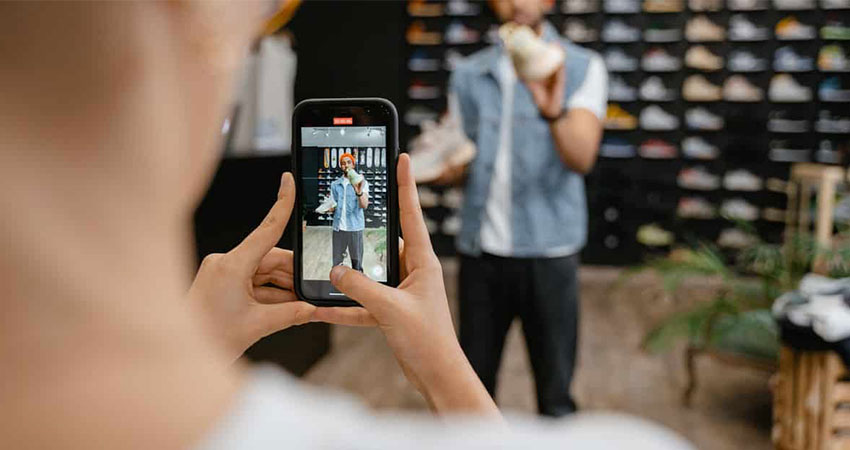In recent years, a new wave of non-traditional, alt-commerce models has emerged, challenging our assumptions about consumer purchasing and preferences. Alt-commerce represents a radical shift in the way people buy and sell products.
Innovation and technological advances, coupled with the need for retailers to foster closer customer relationships, have given rise to new selling channels. Social commerce, for example, lets shoppers purchase products directly through platforms like TikTok – which is aggressively growing its ecommerce business – and Instagram. Brands have also shifted their approach, moving away from traditional advertising, embracing fun, engaging content that’s less heavily promotional.
Other concepts like livestream shopping, autonomous stores, conversational platforms, and even the metaverse provide retailers with innovative new ways to interact with and sell to customers.
On the other hand, there has been a notable shift from business-to-consumer (B2C) transactions to consumer-to-consumer (C2C) transactions. This new economy essentially allows anyone to become a seller.
Platforms such as Vinted enable consumers to resell their second-hand clothes, while services like Getaround facilitate car-sharing with strangers. Community-based bulk buying and direct sales of in-game assets to other fans via platforms such as Patreon have also become increasingly prevalent.
Recommerce and the Circular Economy: A New Consumption Paradigm
We have reached a turning point where reuse is no longer an exception but a conventional way of life, with outdoor lifestyle retailers like REI and Patagonia leading the way. The global resale market in apparel, for instance, is projected to grow 16 times faster than traditional retail clothing by 2026, according to Bloomberg, with this trend observed in all regions of the world.
The cultural shift towards buying second-hand is driven by all generations, particularly younger consumers. In a Worldline survey of 300 consumers in the EU and the U.S., 66% of respondents said they are more willing to buy them now than they were five years ago. Major driving forces behind this shift include the urgency to protect our planet, leading people to reduce consumption and waste, as well as economic pressures.
Sharing and Renting vs. Ownership
Consumer attitudes are also shifting away from ownership, towards alternative consumption models such as renting, sharing and subscription services. The younger generations are driving the adoption of the sharing economy, where owning something is no longer socially essential.
Gen Z consumers, as highlighted in our market research, exhibit a greater inclination towards renting and sharing, especially when it comes to clothing and sports equipment. This shift has resulted in the emergence of new businesses and platforms like By Rotation, a UK peer-to-peer clothing rental platform, and Peerby, a tool-sharing app in the Netherlands. Even Nike and Decathlon have ventured into sports-based subscriptions.
The Group-Buying Landscape
A price-led model spearheaded by companies like Chinese ecommerce platform Pinduoduo allows consumers to place group orders and secure better deals, often directly from manufacturers. In China, a community leader such as a neighbor can recommend and collect orders from other local consumers and use an app to arrange the procurement. The community leader then distributes the products locally. Similar examples of group buying led by reseller agents can be found in Southeast Asian countries.
While the Pinduoduo model has yet to catch on outside of China, other forms of local/community group-buying are emerging in Europe. These initiatives involve neighbors and friends pooling their resources to buy items together and is certainly a trend to watch.
Connecting with Creators
The creator economy includes an estimated 50 million folks, including podcasters, videographers, artists and artisans. Creators monetize their activities in various ways, from selling hand-crafted goods on platforms like Etsy to generating advertising revenue on YouTube or receiving direct payments from fans through emerging platforms such as Twitch.
Moreover, consumers’ growing appetite for genuine, authentic and captivating content has fueled the expansion of the creator economy. Surprisingly, our market research indicates that over a third of people consider themselves creators, having engaged in selling at some point.
Seizing Market Opportunities
Today, marketplaces and platforms are capitalizing on these emerging trends, catering to new consumer needs and harnessing the potential of C2C transactions. Vinted, By Rotation, Patreon and Airbnb all exemplify the diverse range of platforms already capitalizing on alt-commerce. In the coming years, we can expect these marketplaces to continue growing and adapting in response to evolving consumer behavior.
How Brands, Retailers Can Harness the Potential of Alt-Commerce
Leveraging your customer base and trusted position should include embracing alt-commerce to safeguard and expand revenue. While this transformation may disrupt your model, you need to meet the evolving needs of today’s consumers. For example, if they’re no longer as inclined to exclusively purchase new products, how can you innovate to address it? Forward-thinking brands such as French clothing company Isabel Marant have already begun their alt-commerce transformation by successfully incorporating a white-label marketplace solution into their website.
Interestingly, this shift toward alternative buying methods also necessitates new payment-related requirements, a vital aspect of the new consumer landscape. For instance, payment processes must accommodate transactions between individual sellers of second-hand goods; perform one-off Know Your Customer (KYC) verification for sellers that are not businesses; facilitate deposits and refunds; and enable recurring payments for rental and subscription services.
For brands, investing in new business models alone is not enough. You must invest in the right channels to cultivate robust, long-lasting customer relationships. This is the true essence of alt-commerce: a transformative shift in business models combined with a deeper connection to your loyal customer base.
Olivia Viniss is Product Innovations Manager with Worldline

